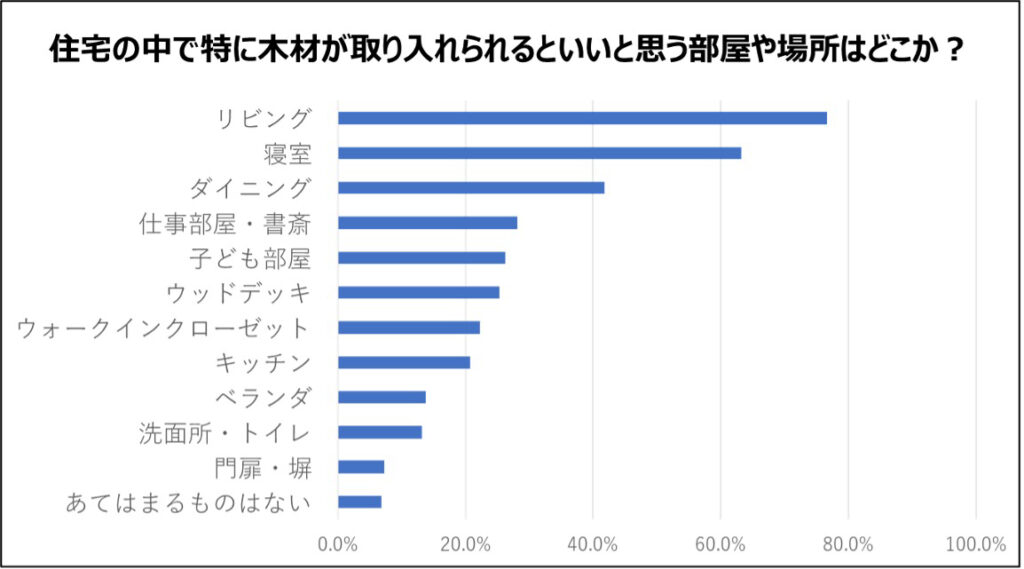[Wooden apartment awareness survey: 4] People want to incorporate wood into relaxing spaces like living rooms and bedrooms
Updated by Yuta Takizawa on July 29, 2025, 5:22 PM JST
Yuta TAKIZAWA
(Platinum Initiative Network, Inc.
Joined Nagano Prefectural Government in 2019. He is in charge of public works bidding and contract administration at the construction office, welfare for the disabled and public assistance caseworker at the welfare office, and is currently on secondment to Platinum Initiative Network from 2024.
The fourth installment of the survey on attitudes toward wooden condominiums, utilizing sei-katsu-sha questionnaires, will focus on "spaces in the home where people expect wood to be incorporated.
Previous Previous post.In the previous section, we introduced the results of a survey conducted to determine the price (rent) at which a wooden condominium would be considered for purchase (or rental) compared to a reinforced concrete (hereinafter "RC") condominium. The survey asked nearly 900 respondents, excluding those who answered that they would not consider purchasing a condominium even if it were cheaper than an RC condominium, about the rooms and places in their homes where they would particularly like to see wood used. The results are shown in the figure.

A total of 3075 responses were received from 889 respondents to this survey, with living rooms (76.61 TP3T) and bedrooms (63.21 TP3T) receiving particularly high support as places in the home where wood should be used. These results indicate that the warmth, comfort, and amenity of wood are highly valued in living spaces where people spend long periods of time.
A certain amount of interest was also shown in spaces where families and individuals spend time, such as dining rooms (41.81 TP3T), study/work rooms (28.11 TP3T), and children's rooms (26.31 TP3T), indicating that wood is preferred for everyday living spaces in general.
On the other hand, in kitchens (20.8%), washrooms and toilets (13.3%), and other water-related spaces, there is evidence of a cautious awareness of the use of wood. There is also a certain demand for wood decks (25.3%) and verandas (13.8%), which are external spaces, and wood is also chosen for creating comfortable outdoor spaces.
Furthermore, only about 6.91 TP3T responded "none that apply," and more than 931 TP3T of all respondents (more than 86% even including those who responded "would not consider even if cheaper than RC construction") would like to incorporate wood somewhere in their housing, indicating that favorable perception of wood is widely spread This indicates that favorable perception of wood is widespread.
The survey results indicate that wood is highly supported especially in spaces where relaxation and peace of mind are sought, such as living rooms and bedrooms, and that its use in these spaces is effective. There is also a certain need for spaces where concentration and a sense of security are required, such as study rooms and children's rooms, and there is potential for proposals tailored to these uses. On the other hand, support for the use of wood in kitchens, bathrooms, and other water-related spaces is somewhat low, and consideration must be given to moisture and preservation when using wood. There is also a certain demand for wood in outdoor spaces such as wooden decks and verandas, where it is expected to be used as a material that contributes to improved design and comfort.
Overall, there was little psychological resistance to the use of wood, indicating a high level of interest in natural materials in residential spaces. In the future, proposals for the use of wood that suit the nature and purpose of living spaces will be required. (Yuta Takizawa, Platinum Network)